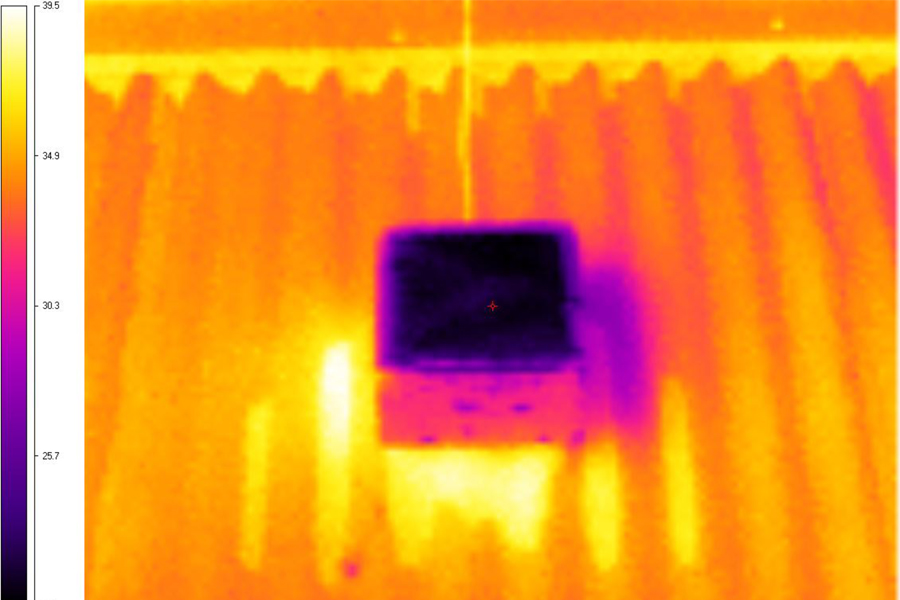
We have previously discussed the topic of urban heat islands. When summer sun heats up asphalt and rooftops in cities, metropolitan areas end up noticeably warmer than their surroundings.
Global climate models are predicting that Australia is likely to warm up faster than any other country in the world, so researchers there have a vested interest in coming up with ways to keep things cool.
Researchers at the University of Technology in Sydney have developed a new material that can keep roofs cooler than the air above them, even in direct sunlight. If roofs don’t warm up, buildings need less air conditioning and the heat island effect is reduced.
Generally speaking, dark roofs get very hot in direct sunlight, but even white roofs absorb enough sunlight to warm up by 16 to 22 degrees Fahrenheit. The University of Technology’s new material is made from something called a “coated polymer stack” – a combination of specially chosen polyester plastics on a silver layer. It actually stays as much as 20 degrees cooler than a white roof because it only absorbs 3% of incident sunlight and simultaneously strongly radiates heat at infrared wavelengths. The new roof can actually be colder than the air temperature around it even on a hot summer day.
The results were obtained from a demonstration installation on the roof of one of the university’s buildings in Sydney. The plastic materials used are available commercially and are potentially suitable for use on basic roofing. This is the first time that passively cooling a roof below ambient air temperature has been demonstrated. The potential is quite intriguing.
**********
.
Web Links
Self-chilling roof material could cool your house for free
A super cool roof solution to being hot in the city
Photo courtesy of University of Technology, Sydney
.
Earth Wise is a production of WAMC Northeast Public Radio.